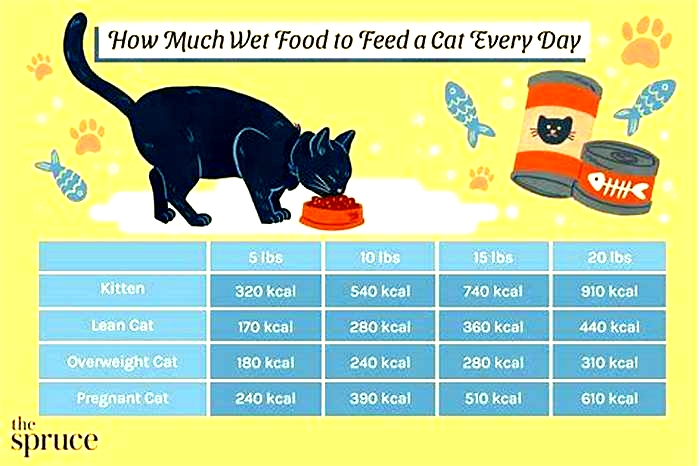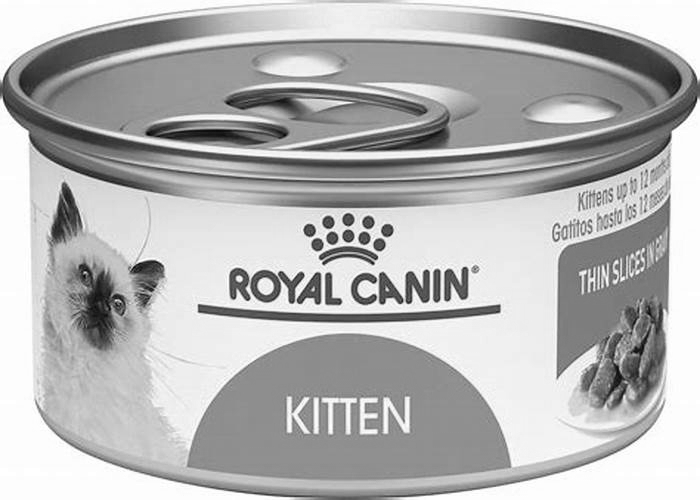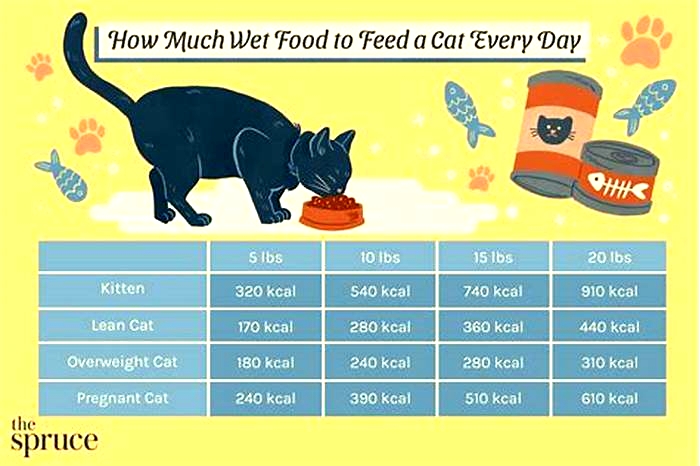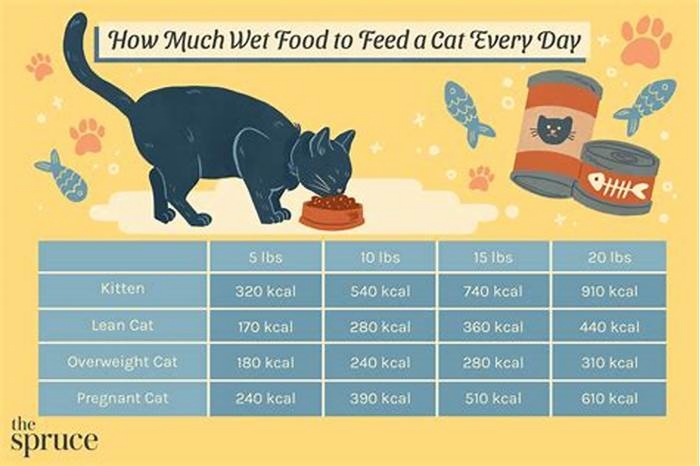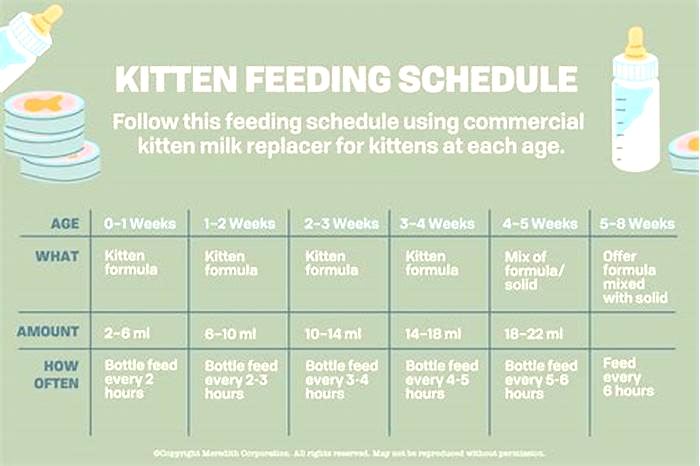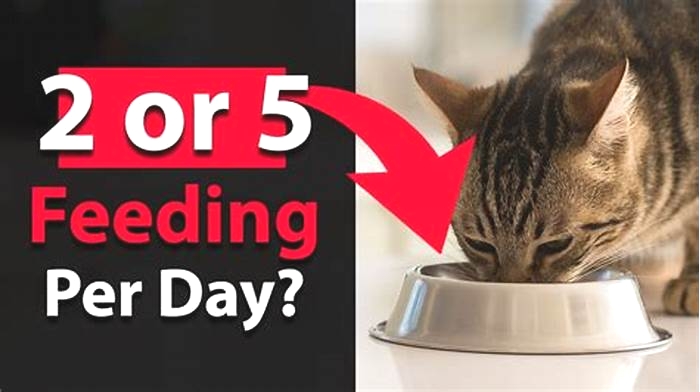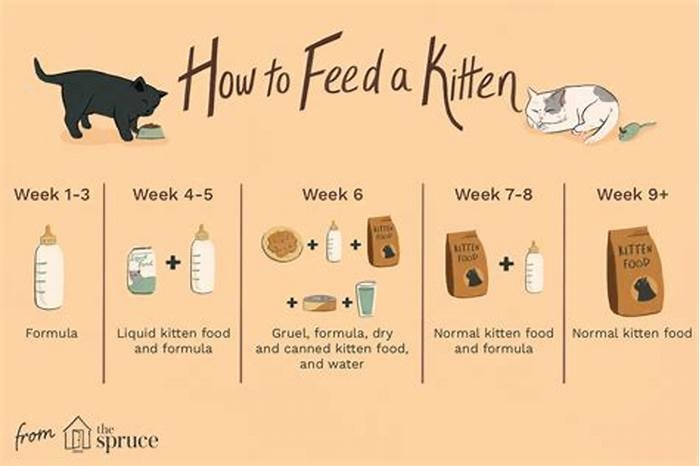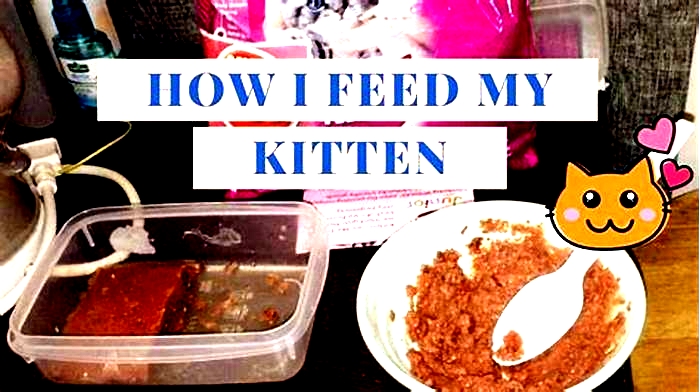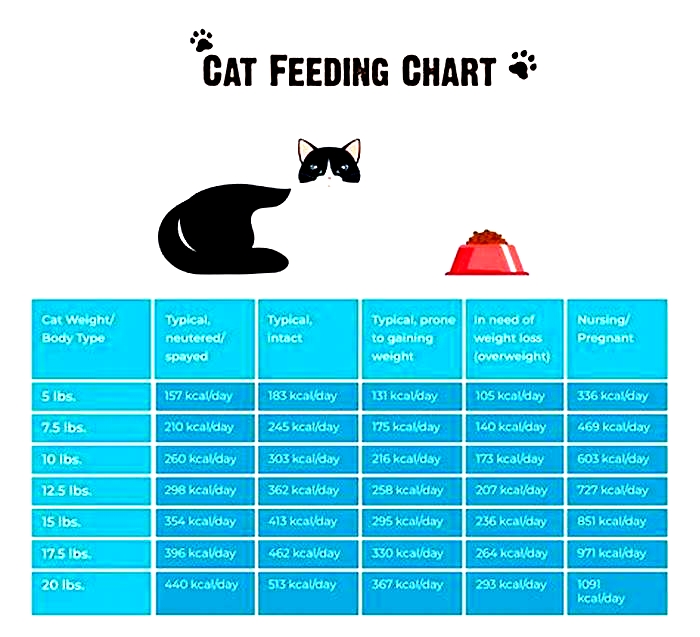Should I feed my kitten wet food twice a day
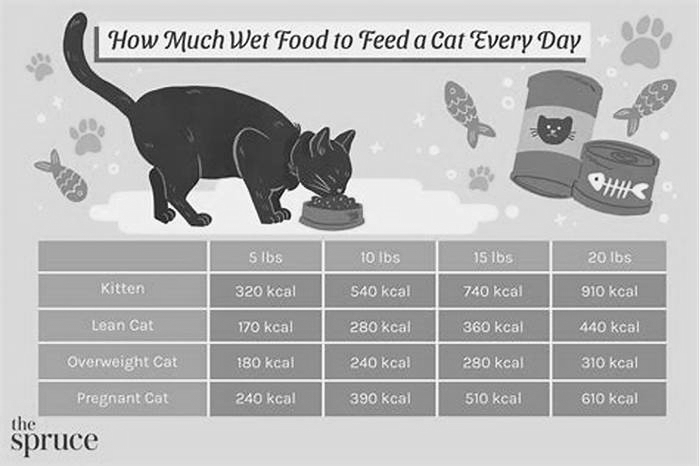
How Often Should I Feed My Kitten Wet Food?
When it comes to caring for a kitten, one of the most important things is diet. Since a cat is supposed to reach their full size between 12-18 months, it is critical that you feed them an adequate diet while they are kittens. The topic of todays article will be wet food and whether or not you should feed your kitten wet food.
Should you feed a kitten wet food?
Yes, wet food is a great option for feeding your kitten. Below are the advantages of feeding your kitten wet food.
Hydration
The best part about feeding your kitten wet cat food is that it keeps your kitten hydrated. Wet cat food contains around 70% moisture, while dry food usually contains less than 10%. This is very important because cats in general have a hard time staying hydrated. This is because in the wild cats usually get their water from the contents of their prey. Sitting water in the wild is usually dangerous because it can contain harmful bacteria or fungus. Water is extremely important for the overall function of your kittens body. Water helps perform essential chemical reactions in their body, and also helps maintain joint health and mobility. Most importantly, water helps regulate your kittens internal body temperature. Water is also a necessity to flush out harmful toxins.
Building Muscle
Secondly, since wet cat food is usually high in protein, it is a great way to help your kitten build muscle. In particular, protein helps develop your kittens lean body mass. This includes muscles, bones, and vital organs such as the kidney and heart. Therefore, protein is crucial in order to support and maintain your kittens vital body functions. While protein can sometimes be hard to digest, the protein in wet cat food is easily digested since it has such a high water content.
Strong smell
Wet food is also great for your kitten because its strong smell makes it very appealing. In the wild, cats are naturally drawn to their prey by their sense of smell. Cats sense of smell is almost 15 times stronger than humans. Therefore, feeding your kitten wet cat food is a great option if they are not attracted to dry food. Best of all, wet cat food is the most natural type of food you can give your kitten since it is so high in meat content. This is because cats are obligate carnivores that need meat in order to survive. Wet cat food is also a great way to sneak medicine into your cat if they dont want to eat the pill.
How often should I feed my kitten wet food
The amount of wet cat food you should feed your kitten is dependent on your kittens age. You should keep in mind that you should only feed your kitten wet cat food after they have been properly weaned. Kittens are usually weaned by the age of 2 months.
If your kitten is 2-6 months old, you should feed your kitten wet food 3 times a day
If your kitten is 6 months or older, you should feed your kitten wet food 2 times a day.
How much wet food should I feed my kitten?
When it comes to quantity of wet food, you should feed your kitten around 25-30 calories per pound of body weight. It is important to remember that wet cat food cant stay fresh as long as dry cat food. You should throw away the wet cat food if it has been sitting for longer than 5 hours.
Feeding Kittens 101: What to Feed, How Much, and How Often
What to Feed Kittens
Your kittens dietary requirements are going to be different from an adult cats dietary requirements. To help a kitten grow healthy and strong, their food typically requires:
Margie Scherk, DVM, DABVP of the Cats Only Veterinary Clinic in Ottawa, ON, Canada, described this in detail at the Central Veterinary Conference 2013 in Kansas City: Young cats have growth requirements, which include an increased proportion of animal-based protein and more calcium and phosphorus.1
Your new kitten will likely have tons of energy and engage in rowdy play, so their food needs to support their body as they burn calories exercising as well as expend energy for growth.
Feeding Kittens Wet Versus Dry Food
Wet and dry cat food are commonly available in kitten formulations, and there are pros and cons to feeding each. To decide which option best suits your kittens needs, talk with your veterinarian and get their recommendation. Here are some pros and cons of each:
Wet cat food is higher in moisture, so it can be beneficial in keeping kittens hydrated, flushing out the urinary tract, and helping kidneys stay healthy. However, wet food tends to stick to the teeth more, which can be associated with dental disease and painful cavity-type problems for cats.
Dry cat food is easier to feed in mutli-cat homes and can help scrape tartar from the teeth. However, some cats can overeat with dry food and gain excessive weight, which can be associated with arthritis, heart problems, blood pressure problems, respiratory problems, or diabetes mellitusjust to name a few.
How to Select a High-Quality Kitten Food
It may take some initial time and energy in determining which food is right for your kitten, but your efforts will be rewarded in a healthy, happy, beautiful kitten.
The best way to find the healthiest kitten food is to compare foods, choose a few possible options, and then talk with your veterinarian about which of those is best for your kitten. Consider the protein source in the food and pick a diet that does not contain a lot of filler ingredients.
How Much to Feed a Kitten
Kittens are growing rapidly at this young age and eat a lot of food compared to adult cats. We want to provide their bodies with everything necessary for growth, but we also want to develop healthy long-term eating habits.
Feeding guidelines are variable by kitten. However, most often, using the feeding directions on the bag or can of food is a good starting place, and then you can adjust as needed for your kitten. Your veterinarian can use metabolic formulas to calculate the number of calories required per day based on your kittens current weight.
We want kittens to come hungry for their meal, but we also dont want them to be feeling so hungry that they devour the entire meal in a few seconds. Often, young kittens may eat to cup of food at a time.
If your kitten is thin, we may need to increase the caloric requirement per day. If your kitten is gaining too much weight too quickly, we may need to cut back. Your veterinarian will use a tool called a body condition score to assess your kittens weight.
Healthy Kitten Growth Rate
A general rule of thumb in kittens is that they typically gain about 1 pound per month.
Often, a kittens weight is about 1 pound at 1 month (4 weeks), 2 pounds at 2 months (8 weeks), and so on until about 4-5 months.
Kittens do most of their growing (both height and weight) within the first year and then stabilize from there. Many of the growth plates of the bones in the kitten skeleton close by about one year old.
At this time, after much of the growth is finished, your vet will typically switch your kitten to an adult diet.
Feeding Methods for Kittens
There are two main ways to feed kittens. Each of these ways have pros and cons, so consider the details and talk with your veterinarian about free-feeding versus portioned meal feeding.
Free-Feeding Method
Free-feeding kittens is usually done with dry food, leaving a bowl out all the time so the food is readily available. This is convenient for pet parents, especially if they have busy schedules.
The benefit to this type of feeding is that your kitten can eat when they want and ideally self-regulate how much they need.
One disadvantage to this is that some kittens will overeat and gain excessive weight. Another disadvantage is that in a multiple-cat household, the older cats have access to and may be eating the kitten food.
This is not always healthy for the older cats needs, and more dominant cats may control the kittens access to the food bowl. In these cases, the kitten may not be getting enough to eat. It can be hard to track an individual cats eating habits when they share a free-feeding bowl.
One way to deal with this is by using a microchip-activated feeder that only opens when it scans your kittens microchip. Just make sure another cat is not guarding this feeder and keeping the kitten from eating.
Meal-Feeding Method
Meal-feeding kittens is the second option for feeding. This works well with wet food that cant be left out all day. Feeding specific portions at certain times is also helpful for monitoring exactly how much and what kind of food each cat is eating in a multiple-cat home.
Meal-feeding is more time-intensive for pet parents and tends to require a more routine schedule. You need to make sure you are able to feed your kitten often enough with this type of feeding. There are some cat food bowls that work on timers to automatically release a measured amount of dry food at specified times.
Kittens can also learn to use their instinctual hunting behavior to work for part of their daily food. This helps keep your kitten healthy mentally and physically.
There are many interactive bowls, balls that disperse dry food slowly, and other options available to keep your kitten occupied so his/her meal is not gone in a few seconds.
How Often to Feed Kittens
Younger kittens (6-16 weeks) need to be fed several meals per day, if you are not free-feeding.
As they are growing and burning calories, we want to keep their bodies supplied with energy. Feed meals every 6-8 hours.
Your veterinarian will figure out the total daily calories that your kitten needs, and you can divide that between the number of meals per day. Typically, by the time kittens get to 4-5 months, they can be transitioned to two meals per day, still feeding the total number of daily calories, but in less frequent, larger meals.
Reasons Your Kitten May Not Be Eating
If your new kitten is not eating well or has diarrhea, call your vet and schedule another checkup.
Sometimes intestinal parasites can cause gastrointestinal upset in kittens. It is common for kittens to come home already infected with parasites. They can get some parasites through the placenta before birth as well as in the milk from the mother cat.
Some of these parasites can also be transmitted to people, so good hygiene and preventive care are important.
Bottle Feeding/Orphaned Kittens
Sometimes a mama cat is no longer able to care for her kittens, and we need to help them. This is a big but rewarding task to take on.
These kittens are often days to a week old (they may still even have their eyes closed). They must be bottle fed, every few hours, initially, with kitten milk replacer formulas.
You also need to use a washcloth to gently wipe their genitals after eating to stimulate urination and defecation, as they are unable to do this themselves in the first few weeks.
These bottle-fed kittens are very loyal and loving, but they do require extra attention regarding socialization since the mother cat is unavailable to teach them acceptable play and biting behaviors.
A good reminder comes from Ed Carlson, CVT, VTS (Nutrition). Kittens that are abandoned by their mothers should be carefully examined for visible birth defects such as a cleft palate and medical attention provided by a veterinarian if necessary. Supplementation with a milk replacement formula or a surrogate mother will be necessary to raise abandoned or orphaned kittens. 2
To learn more about cat pregnancy and kitten care, check out PetMDs complete cat pregnancy and kitten guide.
References
References:
Margie Scherk, DVM, DABVP: Feeding Cats with Different Nutritional Needs: A Dilemma in the Multicat Household, Central Veterinary Conference 2013 - Kansas City.
Ed Carlson, CVT, VTS (Nutrition): Neonatal Nutrition: Feeding Puppies and Kittens from Birth to Weaning, 41st Annual OAVT Conference & Trade Show.
Featured Image: iStock.com/chendongshan

